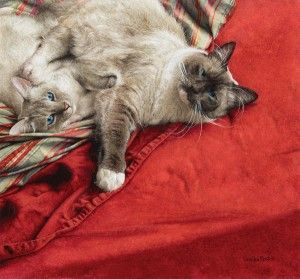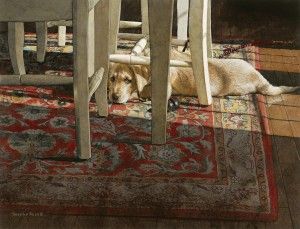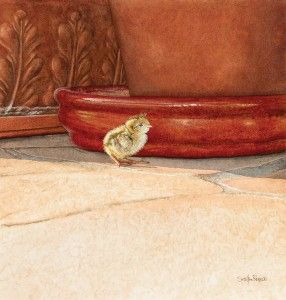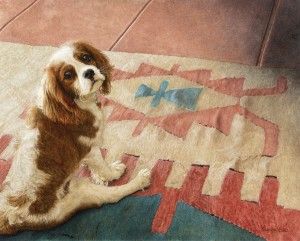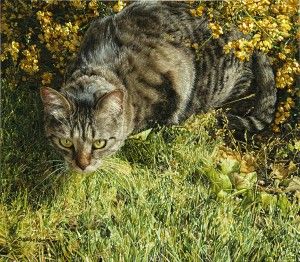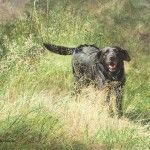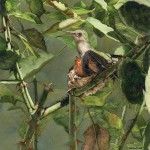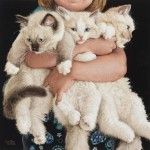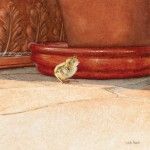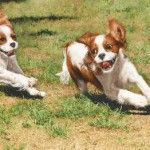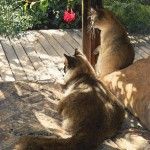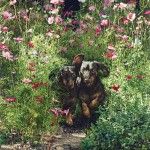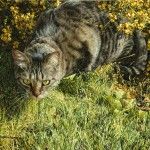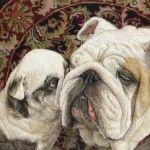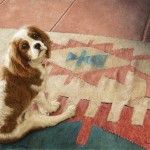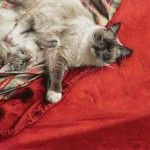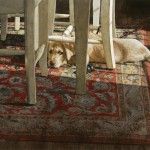Mixed-media artist Sueellen Ross draws on deep connections to the animals she knows best
By Reed Glenn
This story was featured in the January 2013 issue of Southwest Art magazine. Order the Southwest Art January 2013 print edition, or download the Southwest Art January 2013 issue now…Or just subscribe to Southwest Art and never miss an issue!
Sueellen Ross never had any plans for a career in art. “My whole family was involved in community theater productions,” she says. “I tried to break into professional acting but ended up teaching drama in high school.” From those beginnings, a very roundabout course brought Ross to her current career and fine-art methods, producing exquisitely detailed mixed-media renderings of the subjects she finds herself most drawn to: the cats, dogs, and birds that surround her at her home in the Pacific Northwest.
Born and raised in Berkeley, CA, Ross did graduate work in drama and art at the University of California, Berkeley, then taught high school theater, speech, journalism, “and anything else that needed teaching,” she says. But after a few years, she picked up and traveled across the country to find work in New York. “My friend was moving to New York City. I’d been there, loved it, and couldn’t resist,” says Ross. She ended up landing a job as publicity director for Dover Publications. “I walked into Dover, talked to the boss, and was hired immediately. I loved the job,” she says. And New York offered other benefits to the artistic-minded. “I was an artist from the time I could hold a pencil,” Ross says. “I drew and painted all of my life. The idea that I could take classes at the Art Students League and the School of Visual Arts was a dream come true.”
Ross alternated between her work at Dover and teaching in such far-flung places as Geneva, Guadalajara, San Juan, and Key West to satisfy a seemingly insatiable wanderlust. “I could go anywhere I wanted and get a teaching job,” she says. “I was really a restless person, and I wasn’t doing professional art during that time.”
During her years with Dover, Ross met Paul, a yacht captain and the man who would later become her husband, and the adventure-hungry couple made plans to sail around the world, purchasing a 30-foot sailboat. “We took our two cats—who had never been out of an apartment before—and put them on the sailboat and headed out from New York down to Key West.” The one artistic thing she did during that period was a series of charcoal and graphite drawings of the cats on the boat, and that was her solace. For the next year, “We lived wherever the boat landed,” she says. “I did lots and lots of drawings, burned through my savings, and lived off my boyfriend.”
But a year of onboard living damped the couple’s plans to circumnavigate the globe. “One of my cats and I suffered from poor balance and extreme seasickness—fatal flaws for anyone thinking of sailing around the world.” So the couple sold the boat and returned to New York.
To go along with her series of drawings, Ross attempted to write children’s books. The publisher liked the drawings, Ross says, but thought the writing lacked something. After another year in New York, the couple headed west. “We didn’t know where we would end up; we just took off,” she says. “Paul was sick of living in the city, and I was sick of trying to be a publicity director.” The couple landed in Seattle. “We loved it,” Ross says. “Paul got work on boats, and I took a series of little jobs, then gave them up to become a ‘real artist.’”
Ross started canvassing local galleries with her drawings, and it didn’t take long to land a show at a gallery in Anacortes, WA, at which all of her work sold. “They asked me to do another show of birds. So I did 60 mixed-media drawings and paintings of birds, and they sold out at the opening. That was the beginning of my career. I was 40 years old.” At the same time, Ross says her restless urge to travel evaporated. “All I wanted to do was paint and draw. Almost overnight it became a real career.”
In 1981, Ria Foster, an independent agent who sold hand-colored etchings, saw Ross’ work and contacted her. Foster had a print shop on Guemes Island, just off Anacortes, with an artist colony of etchers. “I learned how to use the presses and do the etchings,” Ross says. “But I wasn’t satisfied with the look. So I started hand-coloring them using India ink for the darks, watercolor to add more color to the larger areas, and colored pencil to make them look rounder, softer, and more textured. They were actually completely hand-colored. That’s what I loved doing, that final rich color, and they sold very, very well.”
Ross worked with Foster for three or four years, and then a gallery owner suggested that Ross take her work to the Frye Museum. “I made an appointment with the director, a tiny, elderly lady named Mrs. Greathouse. She showed no apparent interest in my work at the time,” Ross says. But the next day Ross received a note in the mail saying that the Frye Museum would have a showing of her works in three months’ time, and they wanted 60 framed pieces. “I put together every etching I’d ever done and got the show done,” Ross says. “That was in 1986. I absolutely adored Mrs. Greathouse. She was a very important person in the Seattle art world, and I was blessed to know her.”
During that period, Ross’ husband wrote to Bob Lewin, owner of Millpond Press, and sent him slides of Ross’ etchings. Millpond produced limited-edition prints and represented such top artists as Robert Bateman and Carl Brenders. They sold only offset lithographs at that time but wanted to sell original prints, says Ross. “Mr. Lewin then came out to see me, saw the show at the Frye, and signed me up. So I worked with them for many years, and they sold my etchings for me.”
But Ross was still spending too much time doing repetitive work on her quick-selling pieces, and she changed her approach to the method she employs to this day. “I use a hard lead pencil to do a complete drawing at the beginning. Then I go in with India ink, just like I did on the etchings, and fill in my darkest values with the ink. The next stage is watercolor, but I don’t paint the way most watercolorists do,” Ross says. “I paint going from dark to light.” The process varies slightly depending on her subject, but her stages are always the same. “My final medium is colored pencil. It’s almost like oil paint and gives you a three-dimensional feel. It softens edges, gives detail, and texturizes the painting,” she says. “And when I’m all finished, people often think they’re oil paintings or oil pastels.
“I love rich, gooey oil paint, and I painted with oils until acrylics came out in the early 1960s. Eventually it dawned on me that I was much better at drawing than painting,” Ross says. “So I’ve used the drawing as kind of a back door into full color. Instead of experimenting with new media, I’ve gone the other direction. I’ve been so fascinated by how far you can take this technique. It does take longer, but you can do anything with it.”
In 1999 North Light Books published Ross’ book Paint Radiant Realism in Watercolor, Ink & Colored Pencil, which details her method. She is featured in Splash 13: Alternative Approaches, also from North Light. Nineteen times her work has been juried into the prestigious Birds in Art show at the Leigh Yawkey Woodson Art Museum in Wausau, WI. “I think her work is terrific,” says museum director Kathy Foley. “She is masterful in her command of her medium and especially the way in which she brings a number of graphic mediums together.”
“She has a unique way of capturing animals,” says Maryvonne Leshe, managing partner of Trailside Galleries, which represents Ross’ work in both its Scottsdale, AZ, and Jackson Hole, WY, locations. “She puts her subjects in a natural setting, which is the home. There’s a wonderful sense of belonging … a real sensitivity to her work.”
“I don’t want to anthropomorphize either domestic or wild animals,” Ross says, “and I do very few wild mammals these days. I stick with the animals and birds I know because I want to know the creatures I paint on a deeper level. I keep narrowing my scope in hopes of deepening it. More and more over the years I have stuck to the animals on this property or in our own or friends’ families.” Ross and her second husband, two cats, and several dogs live in west Seattle on a half acre on a greenbelt. “We have a 9-acre tract of land behind my studio that is home to coyotes, barn owls, great horned owls, pileated woodpeckers, raccoons, possums, and many other kinds of birds,” says Ross.
All told, Ross says, “People have always been free with their advice for me. I always listen but rarely take it. I’ve been told to loosen up, paint serious subjects, paint with oils, avoid ‘cute,’ speed up, avoid certain breeds or expressions or poses.” But, she says, “I just paint what moves me, and I always have.”
representation
Trailside Galleries, Scottsdale, AZ, and Jackson, WY.
Featured in the January 2013 issue of Southwest Art magazine–click below to purchase:
Southwest Art magazine January 2013 digital download
Southwest Art magazine January 2013 print edition
Or subscribe to Southwest Art magazine and never miss a story!
- Sueellen Ross, You Make My Heart Sing, mixed media, 9 x 12.
- Sueellen Ross, Songs of Love, mixed media, 13 x 12.
- Sueellen Ross, Picks of the Litter, mixed media, 12 x 13.
- Sueellen Ross, Peep, mixed media, 11 x 10.
- Sueellen Ross, Off Leash, mixed media, 9 x 21.
- Sueellen Ross, Motion Detectors, mixed media, 13 x 10.
- Sueellen Ross, Debut, mixed media, 14 x 11.
- Sueellen Ross, Dachshund Dash, mixed media, 14 x 11.
- Sueellen Ross, Crouching Tiger, mixed media, 11 x 12.
- Sueellen Ross, Confidences, mixed media, 10 x 13.
- Sueellen Ross, Cavalier Attitude, mixed media, 14 x 17.
- Sueellen Ross, Carly and Simon, mixed media, 11 x 12.
- Sueellen Ross, Brief Respite, mixed media, 10 x 13.
MORE RESOURCES FOR ART COLLECTORS & ENTHUSIASTS
• Subscribe to Southwest Art magazine
• Learn how to paint & how to draw with downloads, books, videos & more from North Light Shop
• Sign up for your Southwest Art email newsletter & download a FREE ebook






